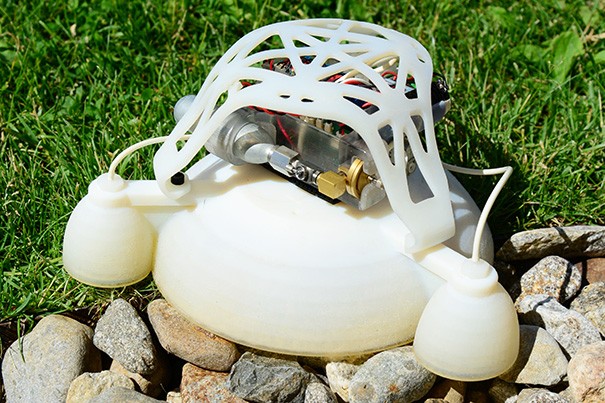A soft-bodied frog-like robot that has the ability to jump is also capable of squeezing into hard to reach places and crevices that could be the answer to the future of disaster or emergency response robotics.
Designed by researchers from Harvard University, these soft robots are very flexible and adaptable and more importantly, can sustain impacts without any breakage.
The challenge here is how to design and build these special robots as most mechanisms such as motors, axles and batteries can be quite rigid. On the other hand, hard robots are fast and powerful but they can also cause potential danger within close proximities with humans.
Researchers solved this problem by combining hard and soft elements to develop this frog-like robot which is also autonomous and can travel around dangerous areas most especially disaster stricken ones. Since a soft bodied robot is now combined with rigid structures, it develops the ability to withstand impacts, making it more disaster-proof.
In order to build parts for the robot, a 3D printer was used to manufacture the robot with various degrees of rigidity as opposed to previous designs and research where soft robots only focused on completely flexible parts.
According to Robert J. Wood of the Wyss Institute for Biologically Inspired Engineering in Harvard University, for practical reasons, soft robots usually possess some rigid parts such as batteries and control electronics. However, this new robot presents a technique where an integration of rigid components with a soft robot is done through different material properties that makes a smoother, hard to soft transition.
This frog robot is printed as one whole piece from different types of material in order to achieve fluid transitions of rigidity with its body. Apart from this unique characteristic of the robot, this invention also contains no separate parts that are sliding into each other which in turn, prevents any clogging of dirt or debris that can be pivotal for the robot to function well in disaster areas.
One of its uncanny abilities is that it can also jump at heights, six times its body height to a vertical direction and half its body width at a horizontal direction.
According to Nicholas Bartlett from the School of Engineering and Applied Sciences, this robot's stiffness gradient can enable the robot to survive dozens of impacts and landings which also allows it to survive the landing upon jumping. It can also move faster than traditional soft robots.
Watch the 3D printed frog hybrid robot here. This new study is published in the journal, Science.



























